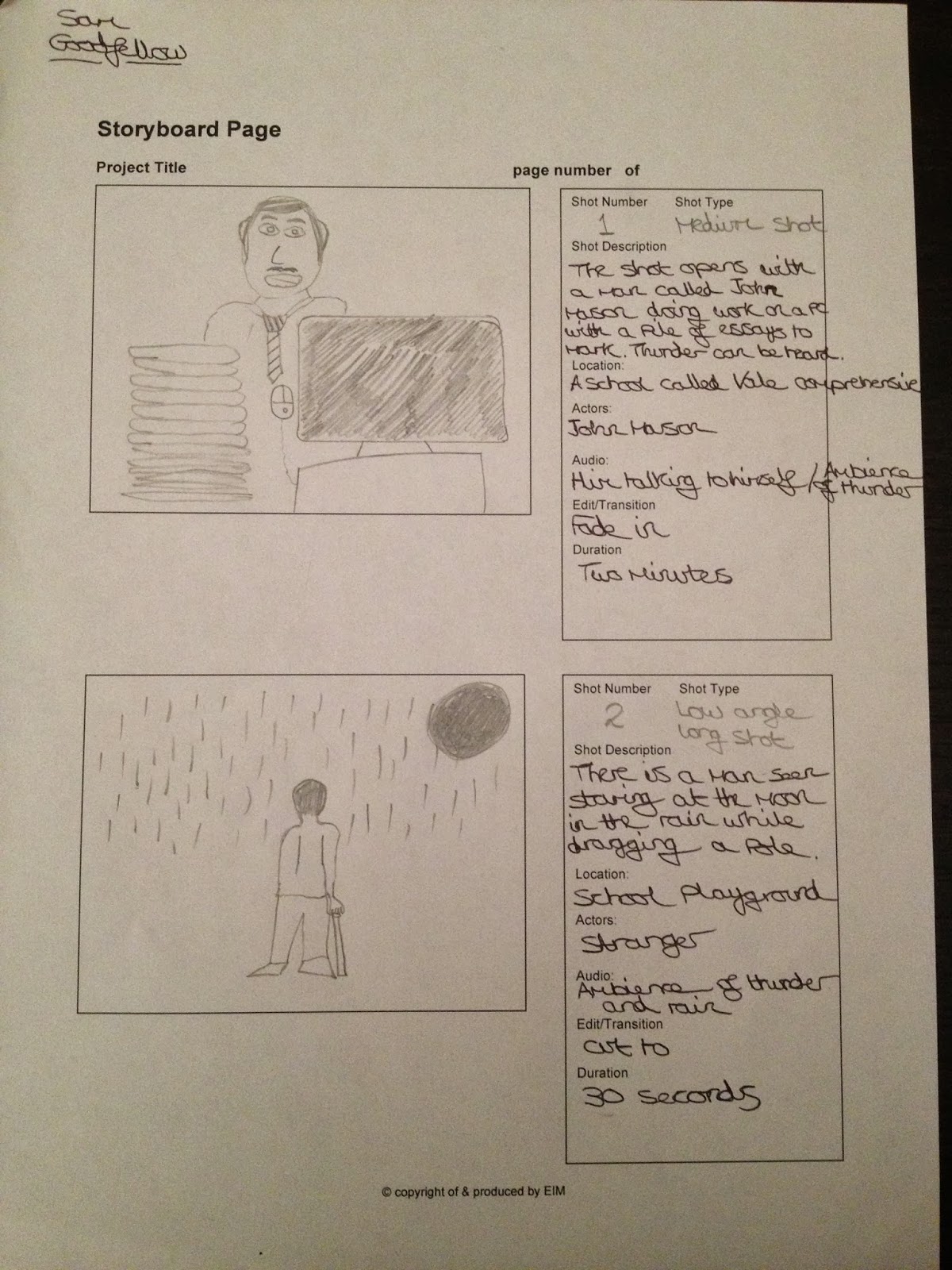Some directors choose not to go with scripts and they prefer to make a 'guerrilla' style film/television show. This is where there is no script and they have a lot more freedom to do what they want and it is often a lot more improvised. A good example of a guerrilla style film/TV show would be the Jackass franchise.
When characters are first introduced in a script they are capitalised. This is so to show to the actors their introduction as well as their importance to the narrative. Many scripts also have a 'CUT TO:' cue. This is so that the director has a clear indication as to where they have to cut the scene.
Scripts are typed up in the Courier font. The importance of this is because an A4 page of dialogue written in Courier font translates into a minute of film. Therefore it is a lot easier for script writers to write in this font so that they can as accurately as possible work out how long they want the film to be.
Every new scene which is indicated in a script has a scene heading which clearly states whether the scene will open up in an interior environment or an exterior environment. The scene heading will also state whether it will take place in the day or night. If the scene is to start in an interior environment then it will say (INT) or for exterior (EXT).
On to top of every piece of character dialogue in the script there will be a character cue. This will be their name in capital letters central at the top of the dialogue. Hence this is just a clear indication of which actor has to speak and so that they know their cue. In class we watched the first 5 minutes of the opening sequence of Scream. The clip from Scream is a good example of a simple piece of script.
Storyboarding
Another component of pre-production which is often very important is storyboarding. Storyboarding is the exact breakdown of evey shot in the film/television show which is drawn into a small box. Next to the box is a list of information about the following shot. For example the duration, shot type, the description of the shot and also what the sound will be e.g diegetic or non-diegetic.
Some directors choose not to create a storyboard for their production. This is often because it gives them more freedom when filming to try out different shot angles and different shot types. Storyboarding can also be very important for the main production because it makes filming easier for the production team because they have everything planned out beforehand and therefore a lot of unnecessary stress is reduced. During the lesson I planned out the first four shots on a storyboard which goes with my short horror script.
In the image below I have drawn up the first two shots in a storyboard for my short film Lose Your Mind. The first shot is a long shot of Luke sitting on the sofa playing the video game Law Breaker. This shot clearly establishes Luke as a lazy 18 year old who spends his life playing his video game. The second shot is an over the shoulder medium shot of a therapist room. Luke is seen lying down on the therapists chair while a therapist discusses with him video game addiction. Luke's parents are also in the room desperately fighting to get their son back. It clearly isn't working as Luke is seen on a Portable PlayStation device. This just yet again establishes Luke as a lazy young adult who is wasting his life away. His parents walk out the room in tears.








No comments:
Post a Comment